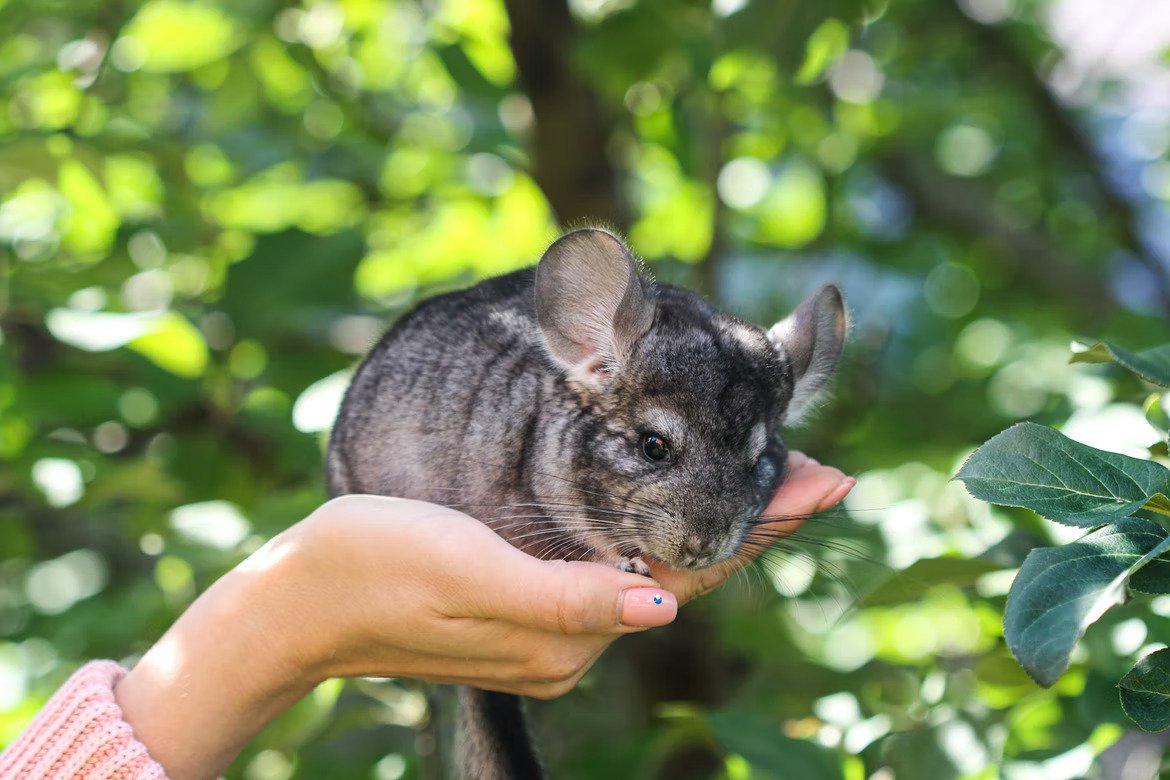
Chinchillas are not a very common domestic pet in Singapore. Thus, many people do not know how to care for chinchillas properly. These small, furry pets make wonderful companions for both adults and children. Before getting one, you have to make sure they are suitable for you. Read more to find out more about how to care for a chinchilla.
Here are some basic chinchilla facts:
Life Span: up to 10+ years
Size: 12 inches long
Diet: Herbivore
Minimum Habitat Size: 24 inches x 24 inches
Getting the Right Habitat
Chinchillas love to jump, climb and play. Therefore, a large, multi-tiered habitat is recommended. A minimum of 2 inches x 2 inches floor space must be provided.
Wire habitats can provide optimal ventilation, choose one with a solid bottom to protect their feet. Plastic habitats are not recommended because they can chew through with their sharp teeth.
Preparation of their Habitat
After choosing a suitable habitat, we need to add some items to make it homey.
Bedding: 1 to 2 inches of bedding should be placed in their habitat. Choose paper-based bedding as it is digestible (if ingested). Try to avoid wood shavings as it can cause serious harm when eaten such as intestinal blockage. Also, avoid cedar-based products as they can cause skin and respiratory tract inflammation.
Decor: Chinchillas love to hide. You should provide hiding places in their habitats to make them feel secure.
Toys: An exersaucer or solid wheel should be provided in their habitat for them to get their exercise. Exercise wheels should be solid inside to prevent their toes and legs from being trapped.
Dust Bath: Allow your chinchilla to have dust baths a couple of times per week to help keep their fur clean. Purchase a dust bathhouse and add some dust inside to allow them to clean themselves.
Cleaning of your Chinchilla’s Habitat
Daily spot cleaning of your chinchilla’s habitat is needed. Remember to remove soiled bedding and leftover food as it can lead to foot sores and inflammation.
Weekly cleaning and disinfecting of their habitat is required.
1. Move your Chinchilla to a separate, secure location.
2. Wash their habitat with a small animal habitat cleaner.
3. Allow the solution to remain for the instructed amount of time before rinsing off.
4. Rinse and allow the habitat to dry completely before placing new bedding in.
Chinchilla Diet
- Clean and fresh water should always be available
- Timothy hay or low-calcium grass hay should always be available as it forms the majority of a chinchilla’s diet
- 1 to 2 tablespoons of chinchilla pellets should be offered daily
- Fresh vegetables like the ones below, together with small amounts of fruits can be given daily but should not exceed 10% of their total diet. Vegetables and fruits not eaten within 24 hours should be discarded, as they are likely to spoil.
- Small amounts of high-fibre treats (occasionally)
For Young Chinchillas:
- Alfalfa hay
Do not feed these:
- Chocolate
- Caffeine
- Alcohol
- Dried fruits
- Raisins
- Nuts
- Seeds
Health
A healthy chinchilla will show these signs:
- Eating and drinking regularly
- Active, alert and sociable
- Clear eyes
- Breathing is easy
- Walking normally
- Fur around mouth and chin is clean and dry
- No nose discharge
If you notice these following in your chinchilla, you might want to visit a vet.
- Weight loss
- Abnormal hair loss
- Diarrhoea
- Lacking faecal pellets
- Distressed breathing
- Eye or nasal discharge
- Skin lesions
- Overgrown teeth
- Drooling
- Wet fur on chin
- Limping
- Loss of fur
- Bloated






























